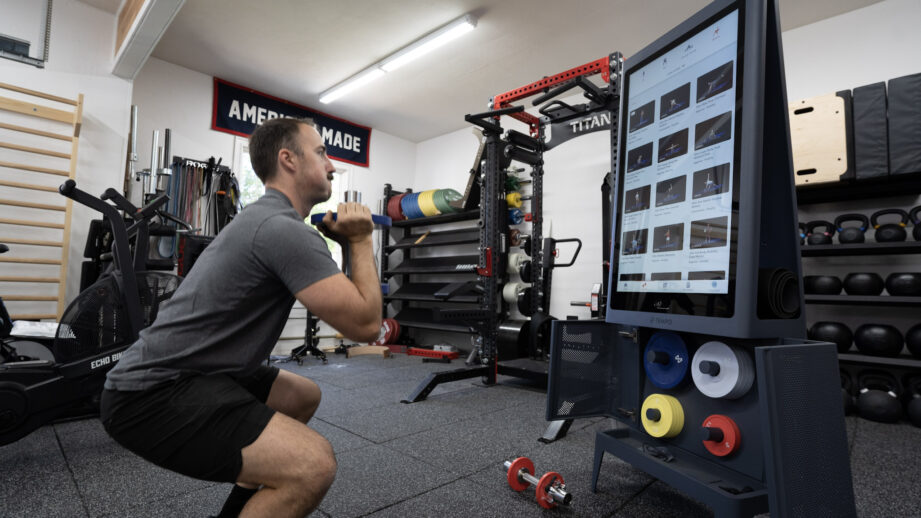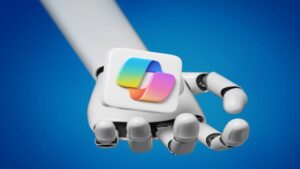The New Fitness Ecosystem: A Convergence of AI, Wearables, and Smart Hardware
The fitness industry is in the midst of a profound technological metamorphosis. The era of passive, disconnected gym equipment is fading, replaced by a dynamic, intelligent, and deeply interconnected ecosystem. This revolution is not driven by a single innovation but by the powerful convergence of three core technological pillars: advanced wearable sensors, sophisticated Artificial Intelligence, and interactive smart hardware. This triad is fundamentally reshaping how we approach personal health, transforming workouts from rote activities into data-driven, hyper-personalized experiences. The latest AI Fitness Devices News highlights a clear trend: major players are aggressively investing in and acquiring expertise across these domains to build comprehensive platforms that capture the entire user journey, from sleep to sweat and back again.
At the heart of this new paradigm is the seamless flow of data. It begins with the user, whose biometric information is captured with increasing accuracy by a new generation of wearables. This data then flows to a powerful AI “brain” in the cloud or on an edge device, which analyzes it to understand the user’s physiological state, performance, and recovery needs. Finally, this intelligence is translated into actionable feedback and personalized content delivered through interactive hardware, closing the loop and creating a continuous cycle of measurement, analysis, and improvement. This integrated approach is the key to unlocking the next frontier in personal fitness and wellness.
The Role of Wearable Technology: The Data Source
Modern wearables have evolved far beyond simple pedometers. Devices like the Apple Watch, Oura Ring, and Whoop strap are now sophisticated biometric data collection hubs. They are packed with advanced sensors that provide a continuous stream of information about our bodies. Key metrics include:
- Heart Rate Variability (HRV): A crucial indicator of nervous system recovery and readiness for strain.
- Blood Oxygen (SpO2): A measure of respiratory and circulatory health.
- Skin Temperature: Can indicate potential illness or changes in the body’s recovery state.
- Sleep Staging: Detailed analysis of light, deep, and REM sleep cycles, which are critical for physical and mental recovery.
This constant data stream, a key topic in Wearables News and Health & BioAI Gadgets News, provides the raw material for AI algorithms. Without accurate, high-fidelity data from these AI Sensors & IoT News-worthy devices, the personalization engine cannot function effectively.
The AI Brain: Personalization at Scale
Artificial Intelligence is the engine that transforms raw biometric data into meaningful, actionable insights. Machine learning models analyze patterns in your sleep data, daily activity, and workout performance to create a holistic picture of your health. This allows for a level of personalization previously only available to elite athletes with a team of coaches and sports scientists. For example, an AI fitness platform might:
- Recommend a low-intensity recovery workout instead of a planned HIIT session based on poor sleep and a low HRV score.
- Dynamically adjust the weight or reps in a strength training program in real-time as it detects fatigue from your movement velocity.
- Suggest specific mobility exercises to address imbalances it has identified by analyzing your form over time.
This is where AI Assistants News becomes relevant, as these recommendations are often delivered via voice or on-screen prompts, acting as a virtual coach that understands your body better than you might yourself.
Interactive Hardware: Closing the Feedback Loop
The final piece of the puzzle is interactive hardware that delivers the AI-driven experience. This goes beyond connected bikes and treadmills. The market is now seeing a surge in devices that use computer vision and other sensors to provide real-time feedback. Smart mirrors like Mirror, strength training systems like Tonal and Tempo, and even interactive yoga mats use built-in cameras and 3D sensors to analyze a user’s form. This is a game-changer, bringing the expertise of a personal trainer into the home. The latest AI-enabled Cameras & Vision News shows how these systems can count reps, measure range of motion, and offer specific, corrective cues like “lower your hips in your squat” or “keep your back straight.” This creates a powerful feedback loop that enhances safety, efficacy, and engagement, turning the living room into a smart gym and a core component of the modern Smart Home AI News landscape.

Under the Hood: The Technology Powering AI Fitness
To truly appreciate the sophistication of this new fitness ecosystem, it’s essential to look beneath the surface at the specific technologies that make it possible. The magic isn’t just in the concept; it’s in the complex interplay of advanced hardware and intelligent software working in concert to monitor, analyze, and guide the user.
Advanced Biometric Sensing and Edge Computing
The accuracy of AI fitness platforms is entirely dependent on the quality of their input data. Modern wearables utilize a suite of sensors to capture this information. Photoplethysmography (PPG) sensors use light to measure blood flow and determine heart rate, while more advanced devices incorporate electrocardiogram (ECG) technology for medical-grade heart rhythm analysis. Accelerometers and gyroscopes track movement in three-dimensional space, enabling detailed activity and sleep tracking. As covered in AI Edge Devices News, there’s a growing trend to process some of this data directly on the wearable or fitness device itself. This “edge computing” approach reduces latency, enhances privacy by keeping sensitive data local, and ensures that core features can function even without a constant internet connection.
Computer Vision and Real-Time Form Correction
Perhaps the most significant AI application in the space is computer vision for form correction. Devices like Tempo Studio use 3D time-of-flight sensors (similar to those in some smartphones for facial recognition) to create a skeletal model of the user. AI algorithms, trained on vast datasets of exercises performed by certified trainers, then analyze this model in real-time. The system can track 25+ key joints, measuring angles and movement paths to ensure the exercise is performed correctly and safely. This is a prime example of applied AI Cameras News. For instance, during a deadlift, the AI can monitor the curvature of the spine, the angle of the knees, and the position of the shoulders, providing immediate auditory or visual feedback to prevent injury. This technology effectively democratizes elite-level personal training, making it accessible to a mass audience.
Voice AI and Natural Language Processing
The integration of voice control is crucial for creating a seamless and immersive workout experience. Fumbling with a touchscreen mid-set is distracting and breaks the flow of a workout. As seen in AI Audio / Speakers News, fitness companies are incorporating sophisticated natural language processing (NLP) to allow for hands-free control. Users can say “start workout,” “increase resistance by 10%,” or “what’s my heart rate?” and receive an instant response. This technology extends beyond simple commands. Future iterations could involve conversational AI coaches that provide motivation and answer questions, further blurring the line between a digital service and a human trainer. This aligns with broader trends in AI Assistants News, where context-aware, helpful AI is being integrated into every facet of our lives.
The Strategic Imperative: Building the Connected Fitness Ecosystem
The rapid technological advancements in AI fitness are not happening in a vacuum. They are fueling a fierce strategic battle among fitness companies to build the most comprehensive and “sticky” user ecosystem. The goal is no longer just to sell a piece of hardware; it’s to capture a user’s entire wellness journey and secure a long-term, recurring revenue stream. This has led to a major shift in business models and a flurry of strategic acquisitions.
From One-Time Product to Recurring Platform
The business model for connected fitness has decisively shifted from hardware sales to a subscription-based platform model. The physical device—be it a bike, a smart mirror, or a wearable—is increasingly seen as the gateway into a brand’s walled garden. The real value and long-term profitability lie in the monthly subscription that unlocks the AI-powered content, personalized training plans, community features, and ongoing software updates. This model creates incredible customer loyalty. Once a user has invested months or years of their personal health data into a platform, the switching costs—both financial and in terms of lost progress tracking—become incredibly high. This strategy is central to the long-term vision of companies in the AI Fitness Devices News domain.

The Acquisition Game: Buying Innovation and Talent
To build these all-encompassing ecosystems quickly, established companies are aggressively acquiring startups with specialized expertise. Instead of spending years on in-house R&D, it is often faster and more effective to buy a company that has already cracked a specific technological problem. A large fitness equipment company might acquire:
- A wearables startup to instantly gain advanced sensor technology and biometric data algorithms.
- An AI software company specializing in computer vision or personalization engines.
- A hardware startup that has developed a novel interactive product, like a smart mat or haptic feedback clothing.
This M&A strategy allows companies to rapidly integrate new features, expand their technological moat, and stay ahead of the competition. It’s a clear signal that the future of fitness belongs to those who can offer a single, seamlessly integrated hardware and software solution, a trend that touches on everything from AI Research / Prototypes News to AR/VR AI Gadgets News as companies look to acquire the next big thing.
The Future: Predictive Health, Gamification, and Total Wellness
The current state of AI fitness is just the beginning. The next wave of innovation will likely focus on proactive and predictive health. By analyzing long-term trends in your performance and biometric data, future systems could predict your risk of injury or overtraining before it happens. Imagine an AI coach that warns you, “Your right knee is showing signs of instability during lunges this week. Let’s focus on glute-strengthening exercises to provide more support.” Furthermore, the lines between fitness and entertainment will continue to blur. The integration of AI in Gaming Gadgets News and augmented reality will lead to more immersive, gamified workouts. This holistic approach will also expand beyond exercise to encompass other aspects of health, with platforms integrating data from AI Sleep / Wellness Gadgets News, AI Kitchen Gadgets News, and even stress-monitoring technologies to provide a complete 360-degree view of a user’s well-being.
Navigating the AI Fitness Landscape: A Practical Guide
As the AI fitness market explodes with new products and platforms, both consumers and developers face a new set of opportunities and challenges. Making an informed decision requires looking beyond the marketing hype and understanding the underlying technology, data privacy implications, and long-term value propositions.

For Consumers: Choosing the Right Ecosystem
Before investing in an AI fitness platform, which can represent a significant financial commitment, it’s crucial to consider several factors:
- Data Privacy and Security: You are entrusting these companies with your most sensitive personal health information. Scrutinize their privacy policies. Where is your data stored? Who has access to it? This is a critical aspect of AI Security Gadgets News that applies directly to your personal wellness.
- Interoperability: Does the platform exist in a silo, or does it play well with others? Check if it can sync data with major health hubs like Apple Health or Google Fit. This ensures you have a centralized record of your health, even if you switch fitness devices in the future. This is a key theme in AI Phone & Mobile Devices News.
- Total Cost of Ownership: Look beyond the upfront hardware cost. Calculate the total cost over several years, including the mandatory monthly subscription. Compare this to traditional gym memberships or personal training to determine the true value.
- Your Personal Goals: No single platform is best for everyone. If your focus is on strength training and form correction, a computer vision system like Tempo may be ideal. If you’re a cardio enthusiast who loves community, Peloton might be a better fit. If your primary goal is optimizing recovery and sleep, a dedicated wearable like Whoop or Oura is the superior choice.
For Developers: Opportunities and Pitfalls
The booming AI fitness market presents immense opportunities for software developers, engineers, and entrepreneurs. The demand for innovative solutions is high, but the landscape is competitive.
- Opportunities: There is significant room for innovation in creating niche AI models for specific sports (e.g., analyzing a golf swing or a tennis serve), developing third-party apps that integrate with major platforms, and designing new sensor technologies. There’s also a growing need for AI for Accessibility Devices News, creating adaptive workout programs for users with disabilities.
- Challenges: The biggest challenge is competing with the massive R&D budgets and data moats of tech giants. New entrants must focus on a specific, underserved niche or develop a truly groundbreaking technology. Data accuracy and building user trust are paramount; a single high-profile failure in either area can be fatal for a new company.
Conclusion: The Dawn of a Smarter, Healthier Future
The fitness industry has reached a critical inflection point. The convergence of AI, wearables, and interactive hardware is ushering in an era of truly personalized, data-driven health and wellness. We are moving away from a one-size-fits-all approach and toward a future where our workout routines, recovery protocols, and even our daily habits are guided by intelligent systems that understand our unique physiology. The strategic acquisitions and massive investments in this space are a testament to this paradigm shift. The focus is no longer on selling isolated pieces of equipment but on building comprehensive, subscription-based platforms that create a continuous, engaging, and effective wellness journey for the user.
For consumers, this means unprecedented access to elite-level coaching and health monitoring. For the industry, it represents a fundamental change in how value is created and delivered. As this technology continues to mature, integrating more deeply into our homes and lives, it promises not just to change how we exercise, but to empower us to take a more proactive, intelligent, and personalized role in managing our long-term health. The AI Fitness Devices News of today is merely the prologue to a much larger story about the future of human well-being.










